|
|
When the fuel supply price hit rural electrification back in the 1970’s, nearly all engine generators were diesels and few spark ignition (SI) generators existed. Fluidyne’s early gasifier development used old car engines, that is up until the gas was clean enough to try in new engines. Like many other companies developing gasifiers at that time (well over 100), the main interest was for mobile transport, and our customers took the risk with their engines just to keep themselves mobile. We only supplied the hearth module to these guys and they did everything else themselves. Multiple application and maximum use of the Gasifier itself was truly proven with these modules, one of which I built myself (240 Cub/inch International Van). With a top speed of approximately 62mph, it was quite acceptable driving for a 2 1/2 tonne vehicle, but slow up the hills. The stationary application was also developing quickly, although we had to build our own SI genset. The first diesel engine mounted on a portable sawmill really caused us to misunderstand dual fuelling due to it being vacuum governing with a speed control butterfly, just the same as SI engines. It worked perfectly and created the impression that dual fuel generation was easier than first thought! Listers, the English engine manufacturer via their New Zealand branch office were really interested, as most generation in the rural Pacific used their engines. They not only made engines available, but provided staff and facilities to support the development of the bolt on conversion kit needed to fit existing diesel installations. Again we were lean into a technical trap by circumstances, as our first engine was the HR3 Lister with an in line injection pump with separate governor. This was the only engine with this type of pump, and other engines in service had rotary injection pumps with very sensitive integrated governors. Because our conversion system was linked to this pump governor manually, as huge effort was made to modify the pumps which not only proved impractical, but didn’t work. Using one of the working HR3 engines, we found that the thermal behaviour of the exhaust changed dramatically during load changes and this change via a flow sensor to provide control of the gas air ratio going into the engine. This was a major breakthrough and enables a conversion kit to be fitted to any design of diesel engine used for power generation. Listers were highly delighted with the performance of these conversion kits which actually improved the engine governing response time to load change. Lister Isuzu and Caterpillar engines were eventually fitted with these systems which we now use to incorporate the gas pipeline terminal, mixer and condensate water separator. The theoretical maximum dual fuel efficiency is achieved when the engine is operating at 80% of it’s maximum output on diesel. In a fixed load situation, this can mean a reduction of diesel consumption by up to 80% at this power output. The best we ever achieved was 82.23% replacement, but conditions were very tightly controlled to maximise the performance. For a normal working variable load situation, replacement is between 65 - 75% depending on the average load. For rural electrification to be successful, any engine supplied for gasified projects should be the most popular brand of engine in that country. If diesel, it should be in no way modified that it prevents its normal operation on diesel, retaining its serviceability from locally available spare parts. It should be noted that when large increments of power are required, using multiple standard engines is far cheaper than singular large engines specifically built for that project. The multiple engine concept also provides for alternative servicing, not possible with single engine options. In recent years, the advent on CHP systems in developed countries using natural gas has provided SI engines most suitable for producer gas. With compensation ratios of between 10 - 12.5:1, their ignition timing can remain the same and alternate from natural gas and producer gas without problems. Fluidyne projects have used SI engines built for natural gas from Lister, Ford, MAN and Caterpillar. Please note not all the photographs are available of these engines as there is nothing to see except the casing around the engine. |
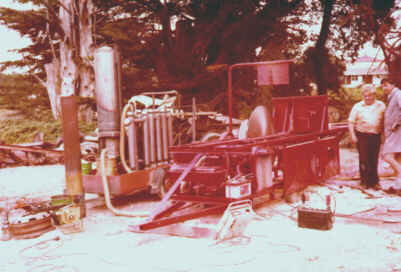 |
It’s 1977, and Fluidyne’s uninsulated gasifier fuels a three cylinder diesel with vacuum governor. This little project really worked well on this portable Gatman sawmill. |
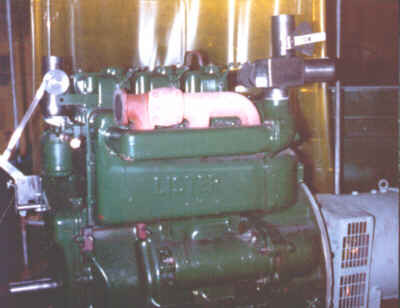 |
Lister HR3 was the first dual fuel system developed by Fluidyne, and was monitored by Lister for the 2,000 hour engine test. Was used to generate electricity on Great Barrier Island (NZ). This engine clocked up over 7,000 hours without problems. |
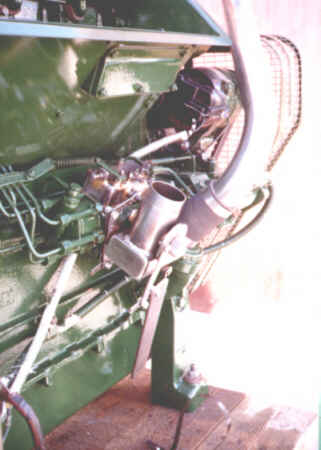 |
Lister HR6 Diesel showing the first attempts to modify the DPA rotary ignition pump. The governor system proved to be unsuitable for our purpose of mechanical linkage, and it also highlighted this impractical approach for other engines. This engine and gasifier went to Pitcairn Island |
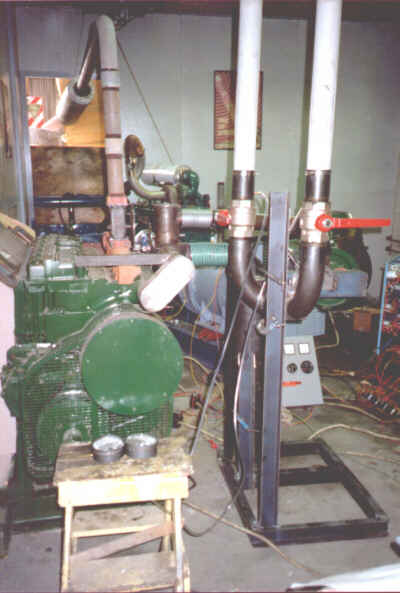 |
Lister JA6 diesel set up in Listers test cell (under construction) for eight hour preacceptance test by a NZ Government engineer. Supplied from two Pacific Class Gasifiers the rigid PVC piping can be seen vertically entering the pipeline terminal. This project was destined for Papua New Guinea and as a NZ Government project, it was also tested after installation in PNG by the same engineer. It is as close as possible to receiving government certification for the performance of the Pacific Class Gasifier. |
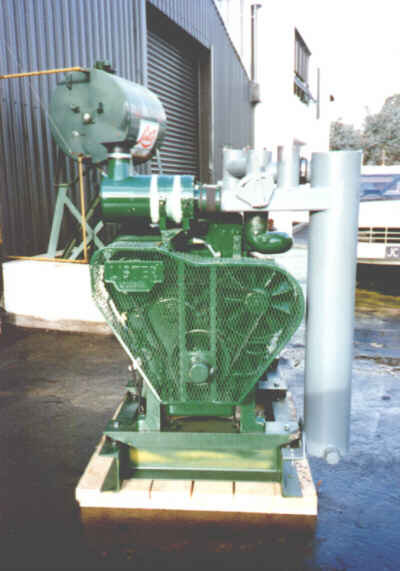 |
This Lister HL4 diesel also shows the condensate pipeline terminal and mixer control. The gas enters vertically into the mixer to join the air before entering the condensate separator. We achieved an 82.23% reduction of diesel fuel for this Mozambique project. NEI Fluidynes managers forbade us to install this project. |
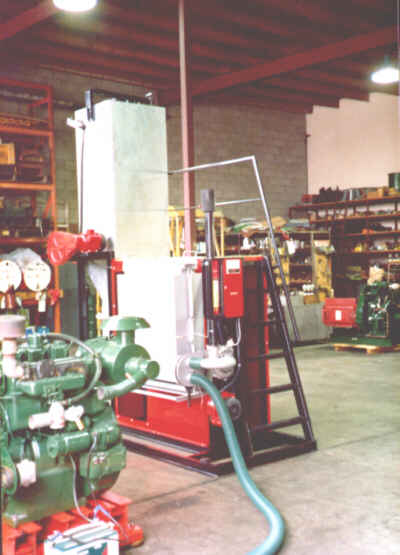 |
Lister HR3G spark ignition engine built for natural gas in the USA by Listers; and the first purpose built gas engine tested by Fluidyne. Note: Fluidyne was testing the engine - not the gasifier. |
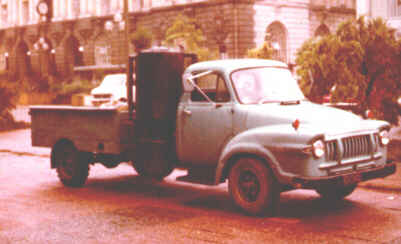 |
This truck was the first mobile and it’s owner set it up with a generator mounted on the opposite side and a fan blower which could be used at the same time to blow gas into a small kiln. |
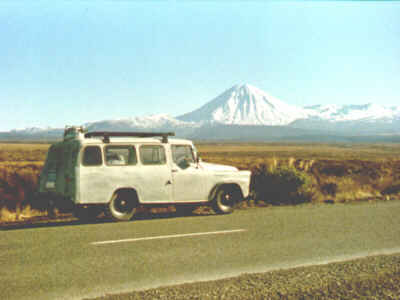 |
Doug’s own personal gasified International van, which became the test apparatus that gave Fluidyne so many answers to so many problems. It also nearly killed Doug with CO poisoning resulting in Fluidyne placing greater emphasis on operational safety procedures. |